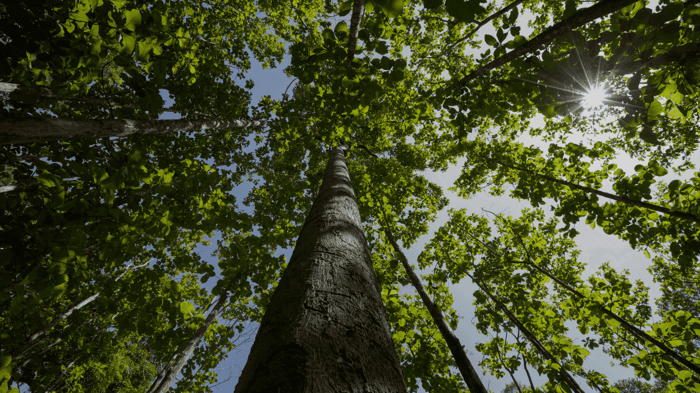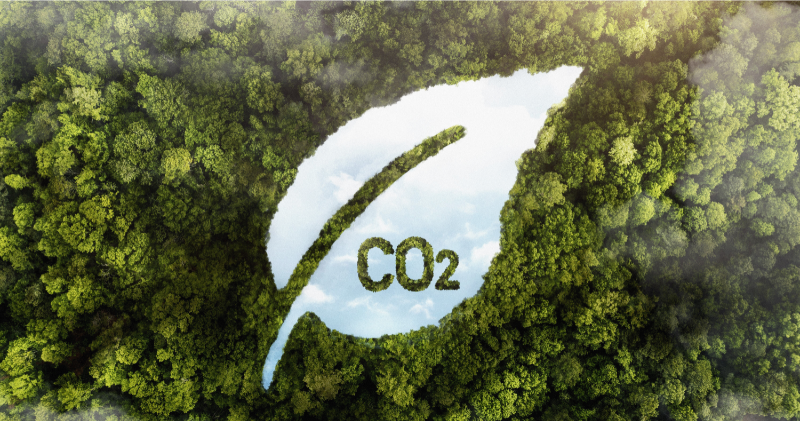
Carbon & Biodiversity
In the face of growing climate and biodiversity challenges, France Valley is offering a European fund dedicated to afforestation, designed for institutional investors wishing to combine profitability with environmental contribution.
Against a backdrop of growing demand for high-integrity carbon credits to meet "Net-Zero" trajectory objectives, France Valley will propose the creation of European carbon sinks.
This vehicle will provide exposure to the fast-growing "carbon credits" asset class, combined with a tangible environmental impact on European soil.

An innovative business model that maximizes performance
1.
Exposure to the growing "carbon credits" market
Growth in demand for voluntary carbon credits: x65 by 2050, according to McKinsey & Company. There is a risk of capital loss.
2.
What is the risk of capital loss?
The creation of new forests with intrinsic value (land value, wood value, etc.) guarantees a value at exit, regardless of the value of the credits. There is a risk of capital loss.
3.
Turn-key Investment Grade Strategy
Rigorously selected projects aligned with the highest international standards. High-quality carbon credits, supported by end-to-end control and transparency, underpinned by France Valley's recognized expertise.
Our investment strategy: premium Carbon Credits in line with market demand
- Biodiversity at the Core: creation and protection of natural habitats (a strong co-benefit also providing price premium)
- Uncompromising Credit Integrity: 100% afforestation (creation of new forests from scratch), hence indisputable additionality (i.e., difference between pre-existing baseline and new situation).
- European by design: 100% of credits originate in Europe, delivering tangible territorial impact
- Market-Grade Security: transparent and regulated European framework, guaranteeing legal certainty of transactions and ownership
- Proven Pan-European Expertise: backed by France Valley’s established presence and expertise across more than 10 European countries.
- Social Safeguards: No displacement, no reclassification of populations, and zero risk of land appropriation (as projects are conducted on unused lands)
This initiative will be reserved for qualified investors and organized in the form of a Société de Libre Partenariat (SLP).
Carbon credits

Understanding Carbon Credits
Contrary to common belief, acquiring existing forests does not in itself generate carbon credits. Why? Because such acquisitions do not modify the baseline scenario—neither in terms of CO₂ capture nor emissions reduction. One carbon credit corresponds to one tonne of CO₂ either avoided or removed from the atmosphere.
Carbon credits are issued exclusively based on:
- Additional actions, such as the creation of new forests (afforestation)
- Verified emissions reductions from industrial or energy-related projects
However, caution is essential: the use of carbon credits involves complex legal, accounting, and methodological considerations. To avoid the risk of greenwashing or misinterpretation, investors and companies must ensure they are operating with established players, in secure investment conditions, with full transparency and rigor.
A lever against global warming
The fight against global warming rests on two pillars:
- Reducing greenhouse gas emissions.
- Increase natural and technological carbon capture capacities.
Forests, the world's second-largest carbon sink after the oceans, play an essential role in this balance. They capture around 29% of global emissions, but this is not enough. Europe, with programs such as LIFE, is mobilizing resources for afforestation, but public funding alone will not suffice. The involvement of the private sector is imperative.


Carbon Credits Market Outlook
An increasing number of companies are committing to Net-Zero emissions, with over 10,000 organizations worldwide setting or pledging to set science-based targets through the Science Based Targets initiative (SBTi). This surge in corporate climate commitments is driving heightened demand for carbon credits, particularly those derived from Nature-Based projects.
This escalating demand for high-quality carbon credits is projected to surpass supply shortly, potentially leading to significant price increases. This underscores the strategic importance for companies to engage in the carbon credit market promptly to secure favorable positions and contribute effectively to their net-zero objectives.
Conclusion:
France Valley offers institutional investors and corporates a high-performance, Nature-Based solution aligned with the most rigorous biodiversity and impact standards.
This pan-European afforestation fund delivers verifiable carbon credits and biodiversity gains, positioning investors and companies at the forefront of climate action, with strong territorial impact and long-term value creation.
In a market where quality and scarcity drive performance, our strategy provides early access to prime, high-integrity assets that drive real climate outcomes.
Discover our Carbon White Paper
Download our White Paper to better understand forest carbon credits
France Valley expertise at Nature's service
Our Sustainably Managed Certified Assets
Certified French forests and vineyards :

Label funds :


Our Sustainable Forest Management Charter
Our team of forestry experts has developed a management charter designed to ensure sustainable forest management, integration into the local economy and social acceptance.

Forest Carbon Index
Our team of experts has developed the Indice de Carbone Forestier (ICF), an indicator that quantifies the amount of carbon dioxide sequestered by France Valley's forests. The objective of the funds is for the FCI to progress from one year to the next.
Frequently asked questions
Afforestation refers to the planting of forests on previously unforested land. It is an additional action creating a new natural carbon sink, essential for capturing atmospheric CO₂. France Valley's Carbon & Biodiversity fund will exclusively finance afforestation projects in Europe, guaranteeing a measurable and sustainable climate impact.
European carbon credits offer a number of advantages: geographical proximity, legal certainty, high quality standards and transparent monitoring. They also provide a strong territorial anchoring, in conjunction with local players, as part of a sustainable finance approach.
The fund will have a strong biodiversity focus: by creating new forest areas, it will encourage the reconstitution of natural habitats, the diversification of species and the resilience of ecosystems. This is a central element of the project's environmental value, over and above carbon capture alone.
Voluntary credits are purchased outside legislated systems, often for CSR or climate reasons. Regulated credits (such as those in the EU-ETS system) are imposed on certain industrial sectors. The voluntary market is more flexible, but requires greater vigilance over the quality and certification of credits.
The Net-Zero concept is based on the balance between CO₂ emissions produced and those absorbed by carbon sinks, such as forests. By financing the creation of new sinks via afforestation, the fund will contribute directly to this objective, complementing efforts to reduce emissions.
An Investment Grade Standard means that the projects included in the fund meet criteria of quality, financial soundness and risk management comparable to those of traditional, well-rated investments. In the case of the France Valley fund, this includes rigorously selected carbon projects, certified according to the strictest international standards, with full transparency on results.

.png?width=300&height=302&name=Caroussel%20Livre%20Carbone%20(2).png)